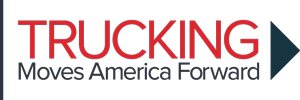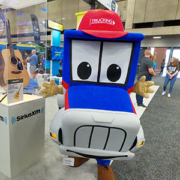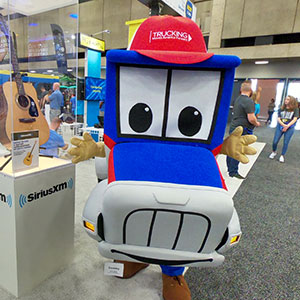By Thomas Black
Trucking companies are increasing their bets on the U.S. economy picking up speed.
Old Dominion Freight Line Inc. and Knight Transportation Inc. are ordering hundreds of vehicles to keep up with freight demand. They’re part of an industrywide push that’s propelling sales of big rigs to an eight-year high, buoying trucking stocks and raising pay for drivers, who are in short supply.
“Freight is up, availability of trucking assets is tight,” said Sandy Cutler, chief executive officer of Eaton Corp., whose products include truck transmissions. Truckers “are feeling more comfortable ordering increased assets.”
Rising cargo rates are giving truckers confidence to expand fleets and replace tractors averaging a near-record age of 9.6 years. While first-quarter U.S. economic growth came to a near standstill, gross domestic product is expected to expand 2.5 percent this year, according to the median forecast of 94 economists surveyed by Bloomberg, topping 2013’s 1.9 percent rise, and accelerate to a 3.1 percent rate next year.
Even with winter storms disrupting highway travel, first-quarter truckload shipping volumes rose 4.9 percent and rates climbed 1.2 percent, according to consultant FTR Associates. North American truckers placed net orders for 90,289 large trucks in the three months ended in March, 35 percent more than a year earlier and the fastest such pace since early 2006.
Comeback Arrives
“We’ve been waiting for a year like this to come back for a few years,” Cutler said in an April 29 interview from Eaton’s U.S. headquarters in Cleveland. “This appears to be the year it’s coming back.”
Eaton raised its 2014 forecast for North American truck output by 5.7 percent to 280,000 units. That was among the highest annual totals projected by seven truck and equipment manufacturers, based on data compiled by Bloomberg. Their average prediction is for an 11 percent gain over 2013.
Old Dominion, based in Thomasville, North Carolina, added $25 million to its budget to buy additional tractors and trailers, raising its planned 2014 equipment investment to $188 million “as a result of our strong volume for the first quarter and our expectation for the remainder of the year,” CEO David Congdon told analysts on an April 24 conference call.
More trucks are on the way for Knight, too, as the Phoenix-based carrier adds 200 tractors, CEO Kevin Knight said on an April 23 call.
Busy Rigs
Active truck utilization has stayed above 99 percent since November, according to data from Bloomington, Indiana-based FTR. That rate had remained lower than 96 percent in 2012 and slid to less than 86 percent in 2009. With few idle trucks, continued economic expansion could translate into an equipment shortage, FTR President Eric Starks said.
“We’re kind of at a tipping point,” Starks said in a May 1 telephone interview. “If the economy heats up at all as we get in the second quarter, early third quarter, then you could have some significant problems from a capacity standpoint and you’d see rates really shoot up dramatically.”
With the difficulty finding available trucks, freight rates might climb as much as 5 percent to 6 percent annually over the next several years, said Brad Delco, a Stephens Inc. analyst in Little Rock, Arkansas.
“What shippers need to be prepared for is that this isn’t a sort of one-and-done pricing year,” Delco said by phone on May 5. Truckers may be in a three- to four-year “pricing cycle” when they’re able to keep raising rates.
Supplier Boost
Suppliers are benefiting as well. Cummins Inc., which produces engines for Class 8 trucks, forecast 2014 sales growth of as much as 10 percent, while analysts surveyed by Bloomberg project a revenue gain of 12 percent for Paccar Inc., the maker of Kenworth and Peterbilt trucks.
The Standard & Poor’s Supercomposite Trucking Index rose 8.9 percent this year through yesterday, almost five times as much as the broader S&P 1500 Supercomposite Index of U.S. stocks. The gauge of 11 truckers beat the broader index in three of the previous four years.
The optimism defies U.S. growth that slowed to a crawl last quarter, with gross domestic product expanding at an annualized rate of just 0.1 percent. Downward revisions for gauges such as inventories and construction spending also suggested deceleration in the world’s largest economy.
Driver Shortage
Tight capacity hadn’t spurred more truck sales because companies are struggling to find people to drive them, FTR’s Starks said. The company estimated the driver shortage at 236,000 in the first quarter, 43 percent more than a year earlier and the largest shortfall in a decade.
Covenant Transport Group Inc., a long-haul trucking company based in Chattanooga, Tennessee, is looking to expand its fleet this year. That means charging more for freight and using most of those profits to attract drivers with higher wages, CEO David Parker said on an April 30 conference call.
“End of the day, our drivers need to be making a whole lot more money,” he said.
Rate increases may push more long-haul cargo to railroads, which can carry double-stacked containers at lower prices than trucks. The tradeoff for rail shipments: slower speeds and, this year, a traffic jam on U.S. tracks because of harsh winter weather, a larger harvest and rising crude-by-rail volumes.
“The ability to put more stuff onto the railroads has been completely constrained,” Starks said. “We know shippers have actually taken some freight off the railroads because they can’t get their stuff there in a timely fashion.”
That’s good news for Eaton’s transmission business. An increase in economic growth promises to drive truck purchases throughout this year, CEO Cutler said.
“What we’ve seen in the last four months is a significant upsurge in orders from the industry,” Cutler said. “It’s really an issue of fleet age and amount of freight being carried.”


